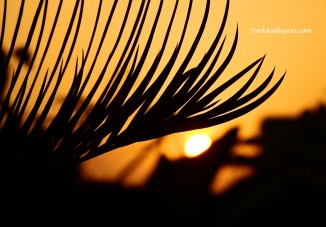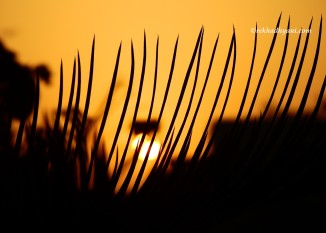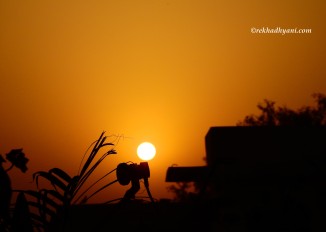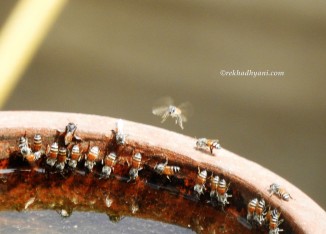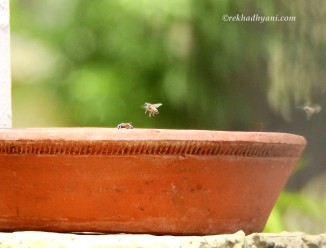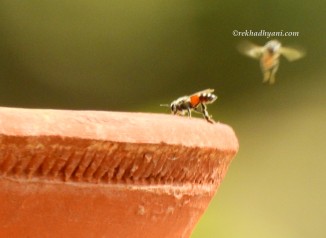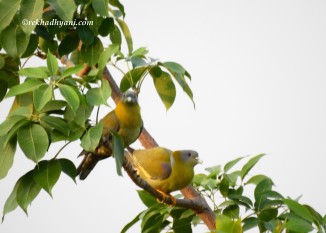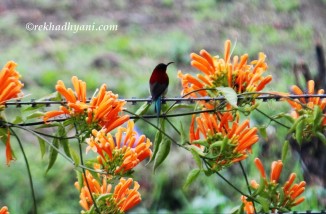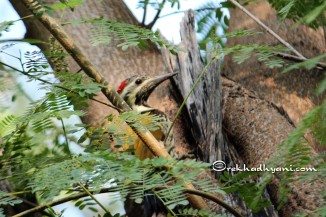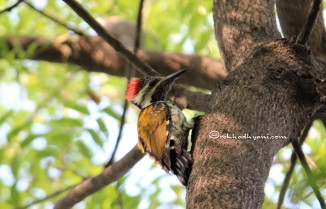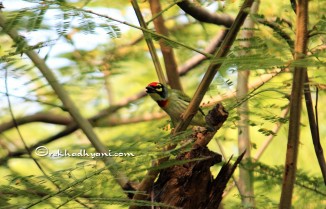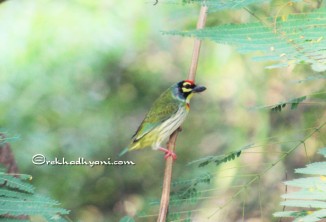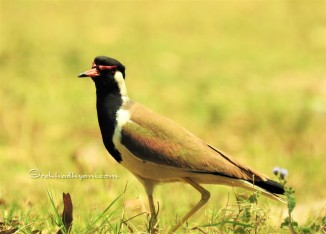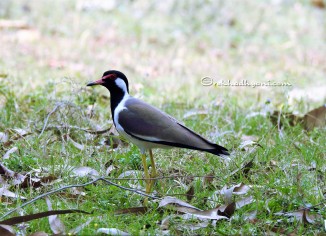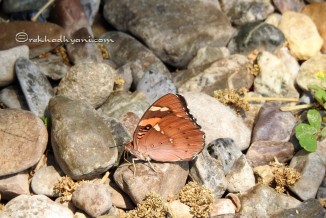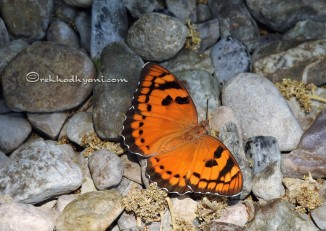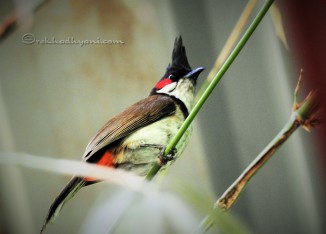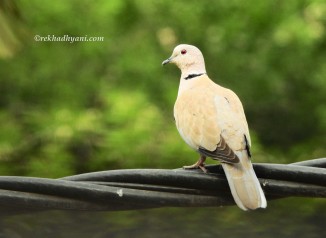
The Eurasian collared dove (Streptopelia decaocto), most often simply called the collared dove, also sometimes hyphenated as Eurasian collared-dove, is a species of dove native to warm temperate and subtropical Asia, and introduced in North America in 1980s.
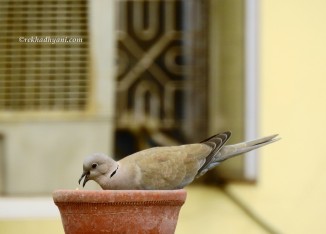
It is a medium-sized dove, distinctly smaller than the wood pigeon, similar in length to a rock pigeon but slimmer and longer-tailed, and slightly larger than the related turtle dove, with an average length of 32 cm (13 in) from tip of beak to tip of tail, with a wingspan of 47–55 cm (19–22 in), and a weight of 125–240 g (4.4–8.5 oz). It is grey-buff to pinkish-grey overall, a little darker above than below, with a blue-grey under wing patch. The tail feathers are grey-buff above, and dark grey tipped white below; the outer tail feathers also tipped whitish above. It has a black half-collar edged with white on its nape from which it gets its name. The short legs are red and the bill is black. The iris is red, but from a distance the eyes appear to be black, as the pupil is relatively large and only a narrow rim of reddish-brown iris can be seen around the black pupil. The eye is surrounded by a small area of bare skin, which is either white or yellow. The two sexes are virtually indistinguishable; juveniles differ in having a poorly developed collar, and a brown iris.
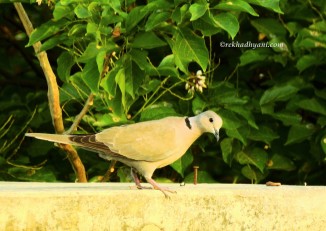
It is closely related to the island collared dove of southeast Asia and the African collared dove of sub-Saharan Africa, forming a superspecies with these. Identification from African collared dove is very difficult with silent birds, with the African species being marginally smaller and paler, but the calls are very distinct, a soft purring in African collared dove quite unlike the Eurasian collared dove’s cooing.
Information Source: Wikipedia
